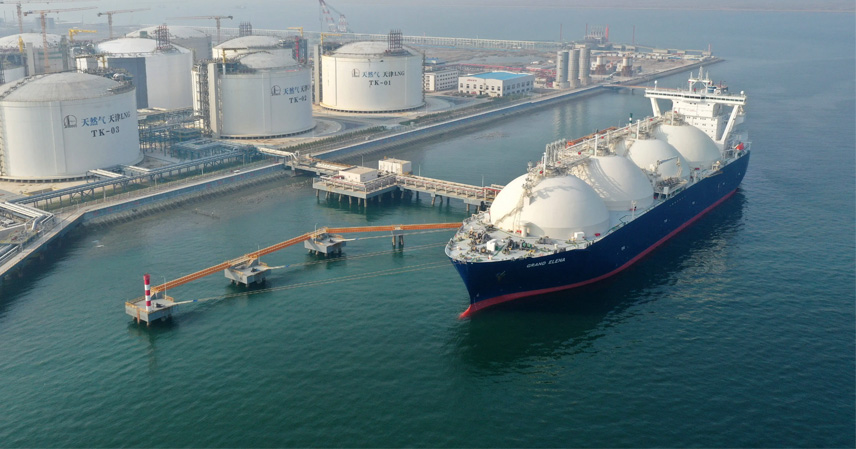In 2025, global oil price turbulence has done little to ease tensions in the international energy market. Instead, it has opened a new chapter in the strategic rivalry between China and the United States.
The U.S. recently passed a policy tightening its energy exports, specifically restricting the sale of certain crude and refined products to China. Far from a mere market adjustment, the move carries an unmistakable strategic undertone—a calculated act of pressure targeting China’s energy security chain.
China, however, did not sit idly by. From diversifying oil sources to reinforcing domestic technology and supply networks, Beijing’s multi-dimensional response signals a shift from defense to proactive restructuring. This “battle over oil” is less about barrels and tankers, and more about who shapes the next global energy order.

America’s Energy Leverage: Old Playbook, New Target
Washington’s energy policy has never been just about economics. In mid-2023, the U.S. Congress passed a Strategic Energy Export Act, limiting specific exports to China—including crude oil, LNG, and refined products.
This was not an abrupt decision but rather a culmination of years of calculated energy containment. Prior to the act, the U.S. Department of Energy had already reduced compliance on long-term crude supply contracts with Chinese firms, citing “security concerns” while effectively tightening supply channels.
At the same time, the U.S. reactivated military and economic cooperation with major Middle Eastern producers, such as Saudi Arabia and the UAE, aiming to retain leverage over global output rhythms. Under the guise of “securing maritime trade routes” in the Red Sea and the Strait of Hormuz, Washington strengthened its energy corridor control—a move that inevitably placed China’s growing oil import needs in the crosshairs.
Domestically, the rebound of the U.S. shale industry since 2024 has transformed America into one of the world’s largest energy exporters, capable of reshaping trade flows. Yet in its selective export strategy, China is conspicuously absent from the priority list.

China’s Response: Strategy Over Sentiment
China’s countermeasures were neither improvised nor reactive—they were the result of long-term strategic foresight.
Beijing has steadily diversified crude supply routes across Southeast Asia, Russia, Central Asia, and Africa, reducing dependency on any single region. With increasing utilization of land-based pipelines, China’s exposure to maritime chokepoints—particularly the Malacca Strait—has significantly decreased.
Simultaneously, China’s strategic petroleum reserve (SPR) system entered a new phase of expansion after 2022. Though exact figures remain classified, analysts believe current reserves can cover short- to medium-term external disruptions, with rapid dispatch mechanisms ensuring “oil when needed.”
In parallel, China’s massive investment in new energy technologies—electric vehicles, lithium batteries, and solar photovoltaics—has transformed what was once policy advocacy into industrial reality. While renewables cannot yet replace oil entirely, they already dilute fossil dependency and stabilize long-term supply resilience.
Moreover, China is strengthening energy logistics sovereignty. Through the China-Myanmar and China-Russia pipelines, a self-owned shipping fleet, and joint port projects with ASEAN partners, Beijing is building bypass routes around high-risk sea lanes. The result: a steadily improving position in the global energy supply network.
The Real Contest: Speed of Transition
This is not a simple “supply-cut and retaliation” contest—it is a race of structural adaptation.
The U.S. continues to guard the oil-centered order it built over the past century. China, in contrast, is racing toward a multi-source, technology-driven energy system.
Washington’s calculus remains tied to control: dominate exports, influence producers, and manipulate prices. Yet this model depends on the world’s continued dependence on fossil fuels. The reality, however, is changing. Technological progress is eroding oil’s monopoly, and global capital is flowing into renewables at record speed.

For China, this “energy war” is not about consumption or confrontation—it is a transformation war. The external pressure has become a catalyst for internal restructuring, accelerating both industrial and energy transitions.
In the long run, this process could redefine China’s global role—not just as a major oil consumer, but as a technology exporter and rule-maker in the new energy era.
A Shifting Global Energy Order
Whether the U.S. can continue leveraging oil for global influence remains uncertain. What is clear, however, is that the age of single-energy dominance is fading.
For China, the real challenge is not the U.S. blockade itself, but whether it can complete its domestic transformation fast enough to secure a stable foothold in the restructured global energy landscape.
Energy is not merely a commodity—it is the backbone of national strategy. The ongoing oil standoff, while framed as supply and demand, is ultimately a rebalancing of global power.
China’s approach—quietly repositioning its foundations rather than confronting head-on—reveals a pursuit of long-term stability over short-term triumphs. In this silent war without smoke, victory will belong not to the loudest voice, but to the one that moves farthest.
References:
- Xinhua News Agency (2024): Reports on China-Europe Railway and China-Myanmar pipeline development highlighting the role of land-based energy routes in easing maritime dependence.



